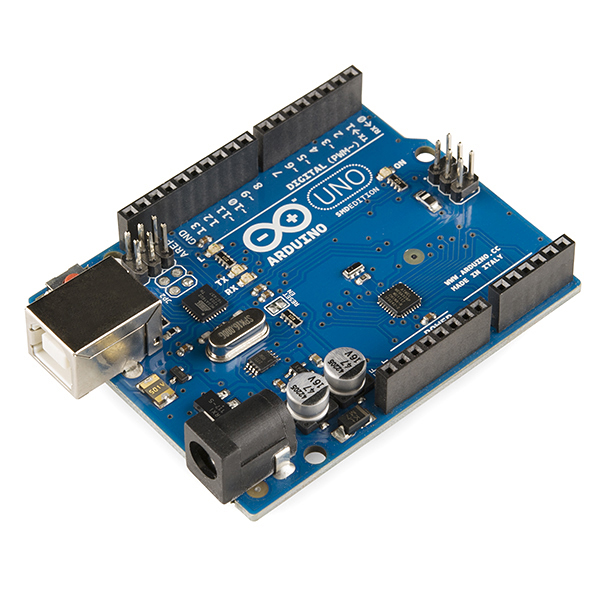Arduino Uno
The Arduino Uno is one of the most popular microcontroller boards in the world, especially favored by hobbyists, educators, and engineers for its simplicity, versatility, and open-source nature. It is based on the ATmega328P microcontroller and is part of the Arduino family, which includes a variety of microcontroller boards designed for various levels of complexity and applications. The Uno board is often the starting point for those learning electronics and programming, due to its ease of use, large community support, and vast number of available libraries.
The Arduino Uno has 14 digital input/output (I/O) pins, which can be used for connecting sensors, LEDs, motors, and other electronic components. Of these, 6 pins can be used as PWM (Pulse Width Modulation) outputs, allowing for dimming LEDs or controlling the speed of motors. It also has 6 analog input pins, which can read values from sensors like temperature or light sensors, and convert them into digital values for processing by the microcontroller.
A key feature of the Arduino Uno is its USB interface, which allows it to be easily connected to a computer for programming. The board uses the USB-to-serial converter to communicate with the computer, making it straightforward to upload programs and monitor output via the Arduino IDE (Integrated Development Environment). The board is powered either via the USB connection or an external power supply (7-12V), making it flexible for both stationary and mobile applications.
The Uno operates on 5V logic but is compatible with a wide range of electronic components that use either 5V or 3.3V logic, as it includes a built-in voltage regulator. The board also features an onboard LED connected to pin 13, which can be used to test basic programs or for simple visual feedback during development.
One of the greatest strengths of the Arduino Uno is its open-source nature. Both the hardware design (schematics) and software (Arduino IDE) are freely available, allowing users to modify, customize, and share their designs. Additionally, the large Arduino community provides extensive resources, tutorials, and libraries, enabling easy integration with a wide variety of sensors, motors, displays, and communication modules.
The Arduino Uno is widely used in prototyping, robotics, IoT (Internet of Things) applications, and education. It is ideal for both beginner and intermediate-level projects, including home automation, interactive art, sensor-based systems, and simple robotics. Its accessibility and flexibility have made it a standard tool for DIY electronics projects, providing an affordable and powerful way to build a wide range of creative devices.
The Arduino Uno has 14 digital input/output (I/O) pins, which can be used for connecting sensors, LEDs, motors, and other electronic components. Of these, 6 pins can be used as PWM (Pulse Width Modulation) outputs, allowing for dimming LEDs or controlling the speed of motors. It also has 6 analog input pins, which can read values from sensors like temperature or light sensors, and convert them into digital values for processing by the microcontroller.
A key feature of the Arduino Uno is its USB interface, which allows it to be easily connected to a computer for programming. The board uses the USB-to-serial converter to communicate with the computer, making it straightforward to upload programs and monitor output via the Arduino IDE (Integrated Development Environment). The board is powered either via the USB connection or an external power supply (7-12V), making it flexible for both stationary and mobile applications.
The Uno operates on 5V logic but is compatible with a wide range of electronic components that use either 5V or 3.3V logic, as it includes a built-in voltage regulator. The board also features an onboard LED connected to pin 13, which can be used to test basic programs or for simple visual feedback during development.
One of the greatest strengths of the Arduino Uno is its open-source nature. Both the hardware design (schematics) and software (Arduino IDE) are freely available, allowing users to modify, customize, and share their designs. Additionally, the large Arduino community provides extensive resources, tutorials, and libraries, enabling easy integration with a wide variety of sensors, motors, displays, and communication modules.
The Arduino Uno is widely used in prototyping, robotics, IoT (Internet of Things) applications, and education. It is ideal for both beginner and intermediate-level projects, including home automation, interactive art, sensor-based systems, and simple robotics. Its accessibility and flexibility have made it a standard tool for DIY electronics projects, providing an affordable and powerful way to build a wide range of creative devices.
